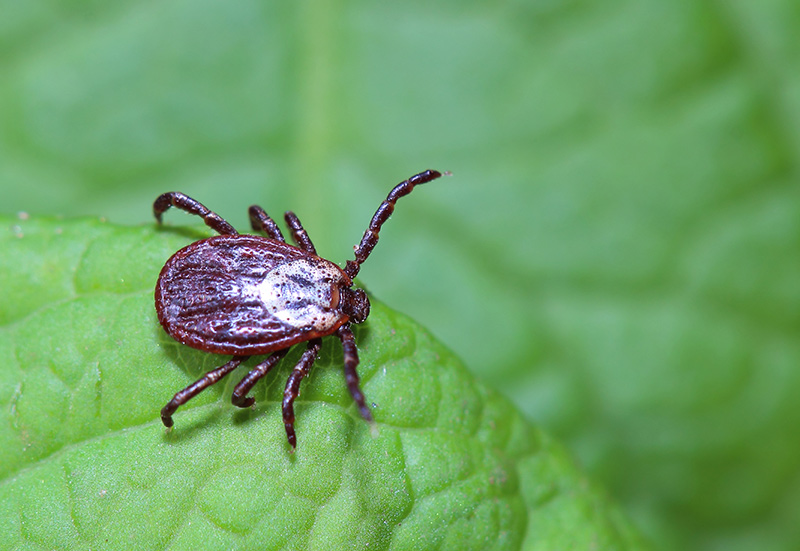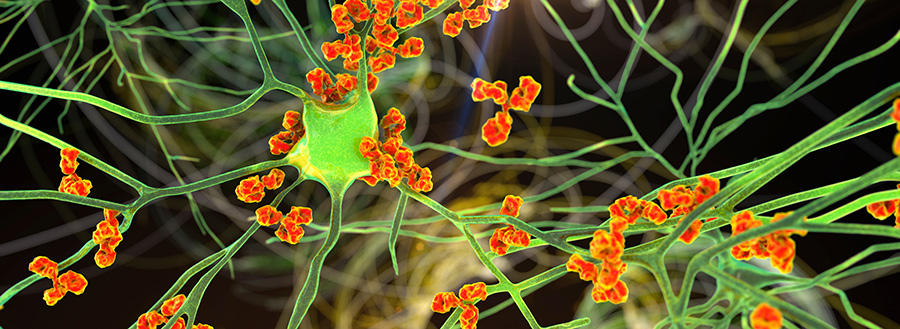 The following is an excerpt from Dr. Kenneth Bock’s book Brain Inflamed: Uncovering the Hidden Causes of
The following is an excerpt from Dr. Kenneth Bock’s book Brain Inflamed: Uncovering the Hidden Causes ofAnxiety, Depression, and Other Mood Disorders in Adolescents and Teens.
This passage concerns the case of Stacy, an adolescent who experienced years of psychiatric symptoms which started after she was bitten by a tick at age 4. By the time she first saw Dr. Bock at age 13, she’d already been prescribed these drugs: Ritalin, Focalin, Strattera, Lexapro, Venlafaxine, Lamictal, prednisone, Zyprexa, Zoloft, Ativan, sertraline and Seraquel. She had also had several doses of IVIG, a treatment for autoimmune conditions.
Signs of Brain Inflammation
S tacey’s elementary school years were punctuated by hypervigilance, school phobia, paranoia, fear of contamination, and uncontrollable rages. Together with neurological symptoms, like the foot drag and the tics, and the OCD, all the symptoms and behaviors screamed brain inflammation to me.
Here are some of the other clues I observed:
- Chronic infections: In addition to multiple strep infections, Stacey had battled chronic sinusitis since early childhood. So many infections suggested a compromised immune system.
- Food allergies: At some point, a doctor suggested that Stacey had a sensitivity to dairy and possibly egg whites, and sure enough her symptoms improved when she eliminated these foods, as well as gluten, from her diet (though she strayed from this diet once she felt better). Food sensitivities would point to the possibility of a leaky gut, which can cause widespread inflammation. If her symptoms improved once her gut health improved, that would suggest the gut could be a contributing factor in her neurological and psychological symptoms. For as we’ve read, a leaky gut can contribute to a leaky blood-brain barrier, which would put a patient at a higher than average risk for brain inflammation. Increased permeability of the blood-brain barrier would make it easier for inflammatory elements, such as those triggered by Lyme disease, to get into the brain.
- Stalled progress: The temporary nature of Stacey’s improvement after IVIG told me that something was blocking the treatment’s efficacy. Could it be that she wasn’t getting a high enough dose? Typically, low doses of IVIG are used to treat immune deficiency conditions, whereas neurological autoimmunity and brain inflammation require higher doses. Stacey’s first two IVIG treatments, the ones that had worked best, were administered at a high dosage, but perhaps to mitigate her severe headaches, her doctor had lowered the dose for the subsequent ones.
- Dilated eyes: Stacey’s pupils were massive the first time I saw her. Living with chronic anxiety means living in a perpetual state of fight or flight. The sympathetic nervous system is on high alert, and to me, that suggests brain inflammation, as dilated pupils are frequently seen during flares of ITABI. [Also known as PANS/PANDAS.]
- Homicidal thoughts: Though Lyme patients typically report crushing exhaustion, there have been instances of people with Lyme committing violence against others or reporting homicidal or suicidal thoughts.
Co-infections
 While ticks are the primary vector for Lyme disease, they frequently carry many other diseases as well, all of which can be transmitted at the same time. In fact, slightly over 50 percent of Lyme disease patients are also diagnosed with at least one co-infection such as Babesia, mycoplasma, or Bartonella.
While ticks are the primary vector for Lyme disease, they frequently carry many other diseases as well, all of which can be transmitted at the same time. In fact, slightly over 50 percent of Lyme disease patients are also diagnosed with at least one co-infection such as Babesia, mycoplasma, or Bartonella.
Lyme disease can be bad; Bartonella can be worse. The same bacteria that causes cat-scratch fever, in which the lymph vessels become inflamed, Bartonella is treated relatively effectively with intracellular antibiotics when caught early. Unfortunately, because it can burrow into red blood cells, it doesn’t always show up in bloodwork. When patients come in with symptoms like numbness or tingling feet, a doctor might test for Lyme, but if the Lyme titer is negative, they’ll assume that whatever is ailing the person can’t be tick-borne.
“While ticks are the primary vector for Lyme disease, they frequently carry many other diseases as well, all of which can be transmitted at the same time. “
However, if they haven’t checked the western blot, and they haven’t tested for any of the common co-infections that travel with Lyme disease (which is especially important in patients who come from endemic areas, work with animals, or spend a lot of time outside), it’s premature to rule out tick-borne diseases. And early detection is important; as with Lyme, the longer Bartonella is left in the bloodstream, the harder it is to eliminate.
 The most distinguishing symptoms of Bartonella are soreness on the bottom of the feet, especially the heel; ice pick–like pain in and around the eyes; headaches; and violaceous striae, reddish-purplish tracks that look like stretch marks. But it can also cause intense joint pain, GERD, difficulty swallowing, and crawling, burning sensations in the skin. Another symptom of Bartonella is intense, violent anger, sometimes accompanied by homicidal thoughts.
The most distinguishing symptoms of Bartonella are soreness on the bottom of the feet, especially the heel; ice pick–like pain in and around the eyes; headaches; and violaceous striae, reddish-purplish tracks that look like stretch marks. But it can also cause intense joint pain, GERD, difficulty swallowing, and crawling, burning sensations in the skin. Another symptom of Bartonella is intense, violent anger, sometimes accompanied by homicidal thoughts.
The other co-infections that frequently travel with Lyme have overlapping symptoms. Babesia, however, is a protozoan parasite that invades the brain and nervous system and causes fever, chills, sweats, chest pain, and most notably, air hunger. Mycoplasma, a type of bacteria, can cause severe fatigue, dry cough, and generalized pain. The more co-infections you have, the more complicated it becomes to treat the Lyme disease.
Explosive reaction
 Stacey’s explosive reaction to the ADHD and psych meds could have been caused by a new Bartonella infection if she’d been bitten by another tick. More likely, however, the cause was brain inflammation, which is often what I find in children who don’t respond at all or have adverse reactions to psychiatric meds. ADHD medicines increase dopamine levels. For a kid with brain inflammation, that’s like throwing a lighted match on a vat of gasoline.
Stacey’s explosive reaction to the ADHD and psych meds could have been caused by a new Bartonella infection if she’d been bitten by another tick. More likely, however, the cause was brain inflammation, which is often what I find in children who don’t respond at all or have adverse reactions to psychiatric meds. ADHD medicines increase dopamine levels. For a kid with brain inflammation, that’s like throwing a lighted match on a vat of gasoline.
Some psychotropic meds are actually anti-inflammatory, which may be one of the mechanisms for their effectiveness in certain patients. Considered along with all of her history, Stacey’s reaction to these medications seemed extremely relevant to me.
If she did have brain inflammation, I had to consider that she could also have an autoimmune problem. Some doctors will say that the symptoms of post-Lyme are residual, that like PANDAS and strep, Lyme disease can provoke a secondary autoimmune problem that persists even when the bacterial infection is gone. That’s the big controversy when discussing persistent Lyme disease: is it a chronic infection, is it an infection with autoimmunity, or is it just a case of autoimmunity?
“If I ran a Cunningham panel—a special test that measures the concentration of antibodies present in the blood—and the results revealed elevated antineuronal antibodies, it could indicate that Stacey’s neuropsychiatric symptoms were being caused by an infection-triggered autoimmune reaction.”
I think it’s a combination. You can kill the infection and still be left with fragments of dead bacteria that can stimulate the immune system and cause an autoimmune reaction, and at the same time bacteria can instigate molecular mimicry that triggers autoimmunity in genetically susceptible individuals.

In fact, about half of patients with persistent Lyme symptoms, in particular neuropsychiatric symptoms, test positive for antineuronal antibodies — antibodies produced against nerve cells, especially when they break down and release their neural antigens. The presence of these antibodies points to evidence of autoimmune inflammation in the nervous system.
Over several decades, researchers have found emerging links between autoimmune disorders and neuropsychiatric disorders, prompting more investigation into whether a subset of what we currently diagnose as primary psychiatric disorders are in fact autoimmune disorders with psychiatric symptoms.
If I ran a Cunningham panel—a special test that measures the concentration of antibodies present in the blood—and the results revealed elevated antineuronal antibodies, it could indicate that Stacey’s neuropsychiatric symptoms were being caused by an infection-triggered autoimmune reaction, which would also explain why IVIG had helped calm her neuropsych symptoms so dramatically.
Editor’s note: Any medical information included is based on a personal experience. For questions or concerns regarding health, please consult a doctor or medical professional.




























